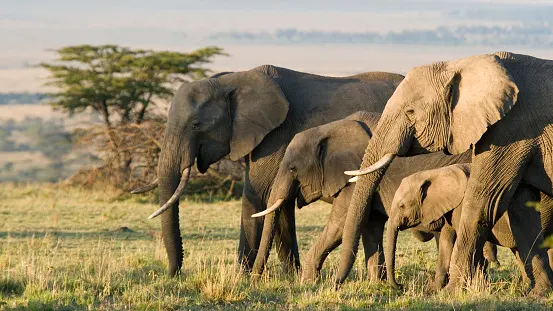
Scientists sucessfully used satellites to count elephants from space
As satellite imagery continues to improve, the technology will be able to detect smaller and smaller animals.
For the first time, scientists have successfully used a combination of satellite cameras and deep learning to count animals from space, a development that could one day help keep a closer eye on endangered species.
The findings have been published in a paper appearing in Remote Sensing in Ecology and Conservation.
Researchers used migrating African elephants in their study, mainly because of their size, but Dr. Olga Isupova, a computer scientist at the University of Bath who created the algorithm that enabled the detection, is hopeful the technology will be useful on smaller animals as well.
In a statement Dr. Isupova said the new monitoring technology allows for more than 5,000 km² of land to be scanned in minutes. When cloud cover is blocking the satellite's view, the process can be repeated the following day, the next time the satellite passes over the area.
"Accurate monitoring is essential if we're to save the species," Dr. Isupova said in the statement, noting that The population of African elephants has plummeted in recent years, mainly due to human activity.
"We need to know where the animals are and how many there are."
While this isn't the first study to monitor animals through satellites and algorithms, it is the first to accurately survey animals in different landscapes and terrain.
WORLD BIODIVERSITY IN DECLINE
The techology comes a few months after a World Wildlife Foundation (WWF) reported a significant decline in global biodiversity between 1970 and 2016.
Over 36 years, mammal, fish, bird, reptile, and amphibian species declined an average of 68 per cent. Latin American and Caribbean populations have seen the sharpest drop, with an average decline of 94 per cent, as well as freshwater species worldwide, which has shrunk by 84 per cent.
Thumbnail image courtesy: Getty.






